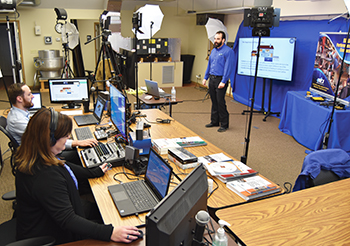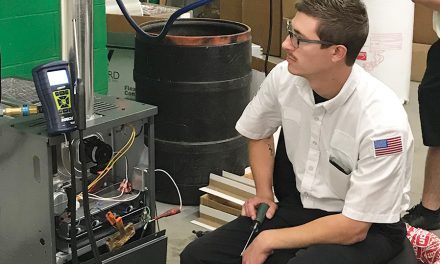Third-Party Training
Most of our training comes from third-party organizations that I hire or through association-offered classes. Currently, this is most of the live training we do. We also have a training room here at Baggett, and I look for opportunities to bring in trainers and hold classes here.
Organizations like National Comfort Institute (NCI) are among the training suppliers we work with. I feel these groups are most concerned with selling us knowledge and not specific products. They also have established reputations for the highest quality training.
This training offers my technicians a deep dive with hands-on learning. This is a great way to build technicians with little technical HVAC experience when we hire them.
We also send technicians away to training. This is at great expense to Baggett but worth the investment for a quality experience and with the right candidate.
Virtual (Online) Training and More
During the pandemic years, I began investigating the advantages of online or virtual training. The pandemic certainly impacted that, but it also had to do with changes in my staff.
Before the pandemic shutdowns, Baggett was already embarking on a new strategy of growing our technicians. We already had several new folks on board and couldn’t go anywhere to train them.

National Comfort Institute, developed live online-live
training to help contractors keep their
technicians up-to-date.
The virtual option just came up and changed everything. Today there is more virtual training available than ever before, but that wasn’t the case earlier. In the early part of the pandemic, groups like NCI began focusing more on it and helped to drive others to change their focus, at least temporarily.
NCI showed that training doesn’t all have to be in person, in a classroom. I would say it was a perfect storm that brought virtual training together.
Once we tried it, the light bulb went off. That is the secret: to try it. Don’t knock it till you’ve tried it.
At Baggett, we have an overall agreeable group of folks working here. In my opinion, typically, good technicians love training. They’ll take it however they can get it. The only downside – this is not something they’ve voiced, but I have observed — is when training takes too long. Techs typically don’t like to sit at a desk all day. It’s usually better to split training up over several days.
I prefer a two to four-hour class, this keeps the technician engaged and not antsy, and also allows us to have some productivity that day as well.
Advantages of Virtual Training
Digital virtual training changes so many things for us. I am excited about it. The biggest reason is that I couldn’t always justify the investment in sending my guys out to live training.
With virtual training, the class cost is nothing compared to paying for travel, hotel rooms, time away from work, and so on. In cases where live classes start on a Monday and the techs must travel on Sunday, that eats into their personal time.
With virtual training, those and other negatives go away. I watch the quality of online live and virtual classes and assess the quality of in-person training because I don’t like sending my technicians to something I haven’t been to myself. This goes back to knowing it will be worth the dollar and time investment, and that the syllabus aligns with our way of doing business.
Click Below for the Next Page:













Recent Comments